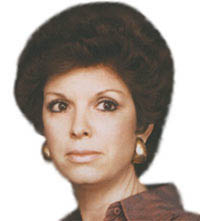Accelerated Education: How We Teach Worldview in Our Family
By Joyce Swann
Printed in Practical Homeschooling #13, 1996.
 Joyce Swann shares her methods for teaching Christian worldview.
Joyce Swann shares her methods for teaching Christian worldview.

|
 |
 From the day of their births, I read the Bible to our children. The day that our oldest child was born, I began with chapter one of Genesis and read two chapters to her. I then placed a bookmark at chapter three and turned to chapter one of Matthew. I then read her two chapters from Matthew and placed another bookmark. Thus I began a daily routine of continually reading both the Old and New Testaments straight through, which continues in our home to this day.
From the day of their births, I read the Bible to our children. The day that our oldest child was born, I began with chapter one of Genesis and read two chapters to her. I then placed a bookmark at chapter three and turned to chapter one of Matthew. I then read her two chapters from Matthew and placed another bookmark. Thus I began a daily routine of continually reading both the Old and New Testaments straight through, which continues in our home to this day.
As other children were born, they were also present for this daily Bible reading. This was our first step in teaching our children a Christian worldview.
The second step was family prayer. As the children grew older, family prayer at the breakfast table became our second method for teaching a Christian worldview. Each morning after the Bible reading, we began at the head of the table and prayed aloud in turn. One day, however, when my son Benjamin noted that we were frequently repeating each other's prayers, he asked each of us to choose one particular area of prayer for these family prayer times. As a result, one of us now prays for our homeschool, another for healing for ourselves and others, another for finances, another for salvation for unsaved friends and extended family members, etc.
Our third step in creating a Christian worldview was weekly scripture memorization. Each week since 1990 we have chosen several scripture verses which everyone, including me, is required to memorize "word perfect." Although we may practice all week, no credit is given until the weekend when we recite the verses for credit. At that time, our names are entered into a log showing that we have completed those verses. Everyone must have recited his verses "word perfect" by Sunday evening.
When our children began studying in our homeschool, I did not move this devotional time into the classroom. I knew that one day they would complete their formal education, and school would end. I never wanted the day to come when they would feel that they should put aside their Bible study and prayer time as well. I wanted them to know that prayer and the study of God's word is forever, and that we never leave it behind.
Because we chose a prepackaged curriculum which does not contain a Christian bias, I encountered a special challenge in bringing a Christian worldview to our children's schoolwork. At first, it seemed that secular texts might present a stumbling block to the children's Christian growth, but as I began to teach, the Lord showed me how to use those texts to a great advantage.
Science was not a problem, since the curriculum we used allowed the children to be excused from any units in the science book dealing with evolution. We did, however, encounter a number of other areas in which a liberal humanistic view prevailed. At those times I discussed those humanistic views with the children and explained to them that although many people adhere to these views, they are in error. We then discussed those humanistic views in light of scripture to see how they erred and what God has to say on those subjects.
For instance, Calvert's fourth grade curriculum contains A Child's History of the World. This text, which is published by Calvert School, is one of the most charming and interesting histories that I have encountered. It reads almost like a novel, and most children are captivated by it from page one.
The only problem is that the first chapter or two deals with "prehistory," a.k.a. evolution. I never allowed my children to read those chapters alone. Before beginning the book, I would tell my fourth grader that this history text was wonderfully fun to read and very interesting, but that the first few assignments were totally untrue. I would then explain that the people who wrote the book were not Christians and were unwilling to accept the Bible. "When people refuse to believe the Bible," I would tell them, "they have to make up stories about how the world began that are just like fairy tales." As I read those pages aloud to my fourth grader, I would stop to comment often. We would discuss what the Bible has to say about creation in contrast to what the history book had to say.
After we got past those introductory pages, the rest of the book was wonderful. I would tell the children that as soon as they reached a place in history where there were written records other than the Bible, the authors stopped inventing history, and we could start taking the book seriously.
Of course, I gave my children much guidance in all of their assignments. I read every book they ever read in school - even on the undergraduate and graduate levels in college - and I discussed with them all the areas in which the texts were in conflict with the Bible and Christian values. This approach was difficult for me, but it worked well for the children.
I believe that instilling a Christian worldview in children involves more than just teaching them Christian values. It also means helping a child to understand what the secular world believes and then showing them why secular thinking is in error. When a child learns to defend his faith early on, he may have less difficulty defending it when he reaches adulthood. When a child actually understands that those parts of a secular education that are in conflict with God's word are not, as so many educators would have us believe, rooted in either "fact" or "science," he cannot be intimidated by those who would have him believe that his faith is "blind." When a teacher can educate her students so that they reach adulthood knowing that God's word is Truth that can withstand any test, she has succeeded in giving them a Christian Worldview.